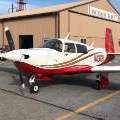What CHT requires cowl flaps in cruise?
-
Members Online
- Lance Keve
- oisiaa
- 303mooney
- Guillaume
- gabez
- MDMooney
- MooneyMurph
- Jsno
- hazek
- Keith20EH
- Yetti
- Scottknoll
- redbaron1982
- Jim Peace
- toto
- Rmnpilot
- LANCECASPER
- 1967 427
- Ragsf15e
- mooniac58
- Skyland
- hammdo
- 201er
- Clearview
- hafner152
- Slick Nick
- Ospeed
- Barzook
- Flyler
- DonMuncy
- caractacuspdoom
- MooneyMitch
- Jackk
- gwav8or


Recommended Posts